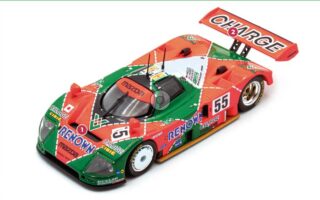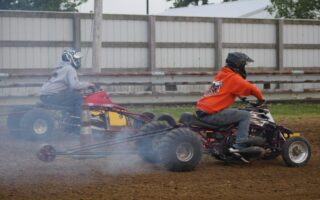Revving Up the Excitement: An Introduction to Sprint Car Racing
In the heart of the racing world lies a thrilling spectacle that captivates fans with its blend of speed, skill, and sheer adrenaline: sprint car racing. Known for their distinctive designs, powerful engines, and light chassis, sprint cars have carved out a unique niche within motorsport that draws both seasoned enthusiasts and curious newcomers alike. The roar of the engines, the sight of cars soaring around the track, and the tense atmosphere of competition all come together to create an exhilarating experience. This article delves into the origins, mechanics, and culture surrounding sprint car racing, shedding light on what makes this high-octane sport a favorite among racers and spectators. Whether you’re a dedicated fan or just beginning to explore the world of motorsports, join us as we navigate the twists and turns of sprint car racing.
Table of Contents
- The Thrill of the Track: Understanding Sprint Car Racing Dynamics
- Engine Performance: Key Factors for Competitive Edge
- Safety Innovations: Protecting Drivers in High-Speed Action
- Building a Winning Team: Insights on Crew Roles and Strategy
- Q&A
- To Conclude
The Thrill of the Track: Understanding Sprint Car Racing Dynamics
Sprint car racing captivates enthusiasts and newcomers alike with its high-speed excitement and intricate nuances. Drivers navigate oval tracks, often gripping the wheel with white-knuckled determination as they battle against one another, the curves, and the unforgiving forces of physics. To truly appreciate this motorsport, one must delve into the dynamics of speed, grip, and aerodynamics that define each lap. Key factors include:
- Weight Distribution: A precise balance can dramatically alter a car’s handling.
- Tire Selection: The right tires can improve traction and decrease lap times.
- Angle of Attack: A driver’s ability to navigate the banking of the track impacts speed and stability.
The artistry involved in mastering a sprint car goes beyond mere acceleration; it intertwines with engineering excellence. Teams strategize every detail—from engine tuning to chassis setup—to enhance performance. Sections of the track vary in grip, and adapting to these changes often separates champions from challengers. Consider the following table for a snapshot of essential car specifications:
| Specification | Description |
|---|---|
| Engine Capacity | 360 to 410 cubic inches |
| Weight | Approx. 1,340 lbs (including driver) |
| Tire Size | Front: 90/5-15, Rear: 105/5-15 |
Engine Performance: Key Factors for Competitive Edge
In the fiercely competitive realm of sprint car racing, the prowess of the engine plays a critical role in determining a car’s success on the track. Engineers and drivers alike focus on various aspects of engine performance to maximize speed and efficiency, ensuring they stay ahead of the competition. Key elements affecting engine performance include:
- Horsepower: The sheer power generated by the engine directly influences lap times.
- Torque: High torque at lower RPMs is essential for acceleration out of corners.
- Engine Weight: Lighter engines improve overall car handling and speed.
- Fuel Type: Choosing the right fuel can enhance combustion efficiency and performance.
Moreover, fine-tuning the engine’s components fosters a balance between performance and reliability. Factors such as cooling systems, exhaust design, and fuel delivery systems must be optimized to ensure consistency on race day. Consider the following table that highlights essential components and their contributions:
| Component | Contribution |
|---|---|
| Radiator | Maintains optimal engine temperature for performance |
| Intake Manifold | Enhances air-fuel mixture flow for better combustion |
| Ignition System | Ensures reliable spark for consistent power delivery |
| Headers | Improves exhaust flow, reducing back pressure |
Safety Innovations: Protecting Drivers in High-Speed Action
In the thrilling world of sprint car racing, safety has taken center stage as engineers and teams innovate to safeguard drivers during high-speed competitions. Cutting-edge advancements in materials and design have led to a new generation of helmets and suits designed to minimize injuries. Featured among these innovations are:
- Impact-Absorbing Helmets: Utilizing advanced composites, these helmets provide enhanced protection against crashes.
- Fire-Resistant Suits: Made from top-tier nomex fabrics, these suits offer superior burn protection while ensuring driver comfort.
- Rollover Protection Systems: Strategic roll bars and bracing are integrated into the chassis to prevent cabin intrusion during flips and tumbles.
Moreover, driver safety is increasingly bolstered by state-of-the-art telemetry that monitors a racer’s physical conditions in real-time. Teams can access critical data on heart rates and other biometric signals, allowing them to make immediate decisions about driver safety. This proactive approach is encapsulated in:
| Technology | Benefit |
|---|---|
| Real-Time Health Monitoring | Ensures drivers are physically fit to compete during races |
| Collision Detection Systems | Alerts teams instantly in case of a crash, enabling quick response |
| Telematics Data Analysis | Aids in evaluating and improving safety protocols post-race |
Building a Winning Team: Insights on Crew Roles and Strategy
In the high-octane world of sprint car racing, assembling a dedicated and skilled crew is paramount to achieving success on the track. Each member of the team plays a critical role, ensuring that every element of the car is fine-tuned and race-ready. From mechanics who meticulously assemble the car to spotters who communicate vital information during the race, the synergy between these positions is essential. Consider the following roles that contribute to building a winning team:
- Driver: The heart of the team, requiring precision, focus, and unparalleled skill.
- Chief Mechanic: Responsible for setup adjustments, repairs, and performance optimization.
- Spotter: Provides real-time tactical advice and track information to the driver.
- Team Manager: Oversees the entire operation, coordinating resources and planning strategy.
- Data Analyst: Interprets telemetry and performance data to enhance future runs.
The strategy for success on the track not only lies in the individual expertise of each crew member but also in the seamless collaboration between them. Establishing clear communication channels and fostering an environment of trust can make all the difference during races. To illustrate the impact of teamwork on outcomes, here’s a simple breakdown of race day responsibilities:
| Role | Responsibility |
|---|---|
| Driver | Execute race strategy and manipulate car dynamics. |
| Chief Mechanic | Ensure car readiness through effective tuning and quick repairs. |
| Spotter | Guide the driver on positioning and potential hazards. |
| Team Manager | Coordinate logistics and tactics during the race. |
| Data Analyst | Analyze performance metrics for continuous improvement. |
Q&A
Q&A: Unveiling the Thrills of Sprint Car Racing
Q1: What exactly is sprint car racing?
A1: Sprint car racing is a high-octane motorsport that features powerful, open-wheeled vehicles racing on both dirt and asphalt tracks. These cars, known for their lightweight design and aerodynamic wings, are built for speed, agility, and sheer excitement. The races often take place on oval tracks and can be incredibly competitive, showcasing skilled drivers maneuvering at breakneck speeds.
Q2: How did sprint car racing originate?
A2: Sprint car racing traces its roots back to the early 20th century, evolving from traditional auto racing. Initially popularized at local fairs and speedways, it gained traction in the United States during the 1930s and 1940s. As racing technology advanced, the cars became faster and more specialized, leading to the exciting sport we know today, featuring various classes and types of competition.
Q3: What distinguishes sprint cars from other types of race cars?
A3: Sprint cars stand out due to their unique design and features. They are typically lighter than other race cars, equipped with large, powerful engines that allow for remarkable speed. Additionally, the prominent wings on top serve to increase downforce, providing better traction at high speeds. This design, combined with the small, flexible chassis, allows drivers to navigate corners with thrilling precision.
Q4: Can you explain the different types of sprint cars?
A4: Certainly! There are primarily two main types of sprint cars: winged sprint cars and non-winged sprint cars. Winged sprint cars are the more common type, recognizable by their large top wings that aid in aerodynamics during races. Non-winged sprint cars, conversely, lack this prominent feature, leading to different handling characteristics and often more driver reliance on skill. Additionally, different racing organizations, such as the World of Outlaws and the All Star Circuit of Champions, have their specifications and classes for sprint cars.
Q5: What should spectators expect when attending a sprint car race?
A5: Spectators can expect a thrilling atmosphere filled with adrenaline and excitement. The sound of roaring engines, the sight of cars flying around the track, and the skillful precision of drivers make for an unforgettable experience. Races typically feature multiple heats leading to a main event, adding to the anticipation. Fans can also enjoy the camaraderie in the pits, where they can meet drivers, see the cars up close, and feel the vibrant racing community.
Q6: Are there specific skills that sprint car drivers must possess?
A6: Absolutely! Sprint car drivers must exhibit a unique blend of skills, including exceptional hand-eye coordination, quick reflexes, and strategic thinking. They need to master the art of throttle control to manage the explosive power of their vehicles, especially during tight turns. Furthermore, drivers greatly benefit from the ability to read the track conditions, as dirt surfaces can change rapidly, impacting handling and speed.
Q7: How can someone get involved in sprint car racing?
A7: Getting involved in sprint car racing can begin in various ways. Aspiring drivers often start by participating in karting or midget racing to hone their skills. Once they have gained enough experience and confidence, they can transition to sprint cars. For those more interested in other roles, such as mechanic or crew member, volunteering at local tracks or with established racing teams can provide invaluable experience and knowledge about the sport.
Q8: What’s the future of sprint car racing?
A8: The future of sprint car racing appears bright, with a growing fan base and advancements in automotive technology. As the sport continues to innovate, we may see enhanced safety measures, electric-powered sprint cars, and more diverse venues. Efforts to attract younger audiences through social media and interactive experiences could further propel its popularity, ensuring that the thrill of sprint car racing remains alive for generations to come.
—
Whether you’re a seasoned fan or just discovering the world of sprint car racing, this adrenaline-fueled spectacle promises excitement at every turn!
To Conclude
As the engines roar to life and the checkered flag flutters in the breeze, sprint car racing encapsulates a world where speed meets strategy, and courage dances with precision. From the meticulous craftsmanship that goes into each vehicle to the heart-pounding moments on the track, this exhilarating sport continues to draw fans into its thrilling embrace. Whether you’re a seasoned enthusiast or a curious newcomer, the magic of sprint car racing offers a unique blend of excitement and artistry that is unparalleled. As the dust settles and the last lap concludes, one thing remains clear: the spirit of competition will always fuel the relentless pursuit of victory, leaving an indelible mark on the hearts of those who dare to chase the next unforgettable race. Here’s to the champions and the challengers, to the stories yet to be written, and to the tireless passion that keeps the wheels of sprint car racing turning.



